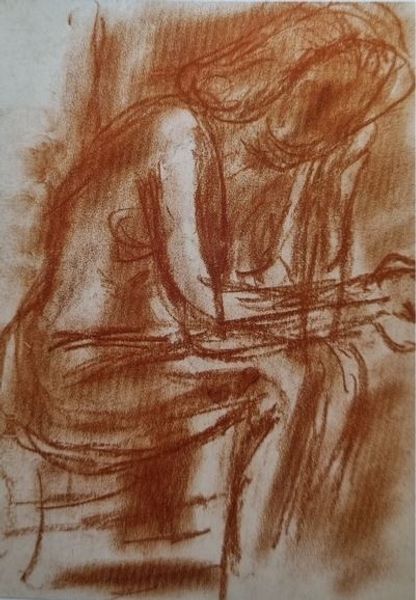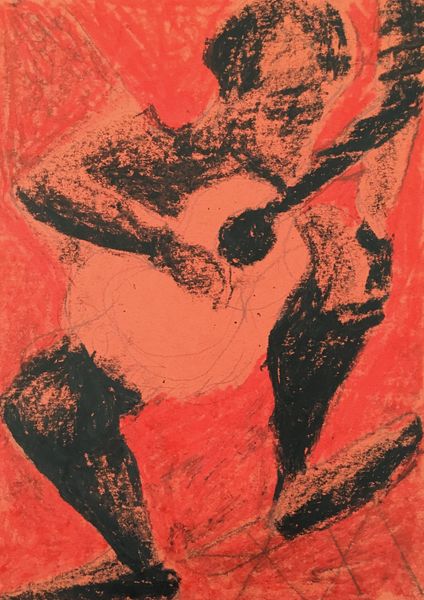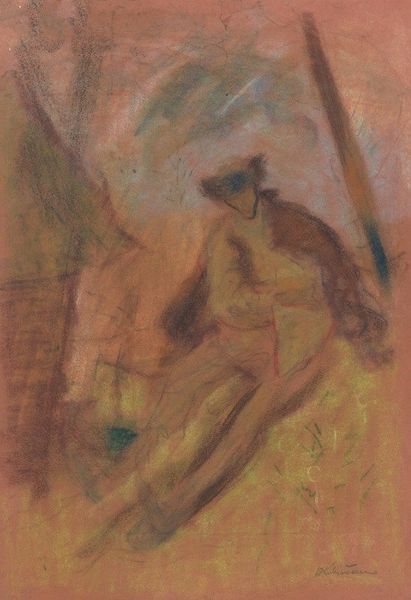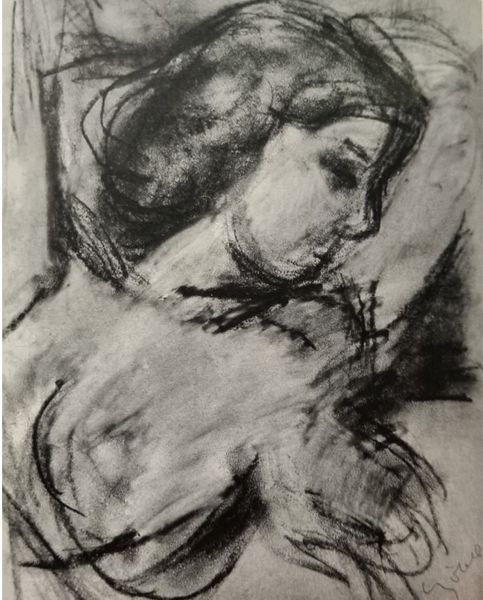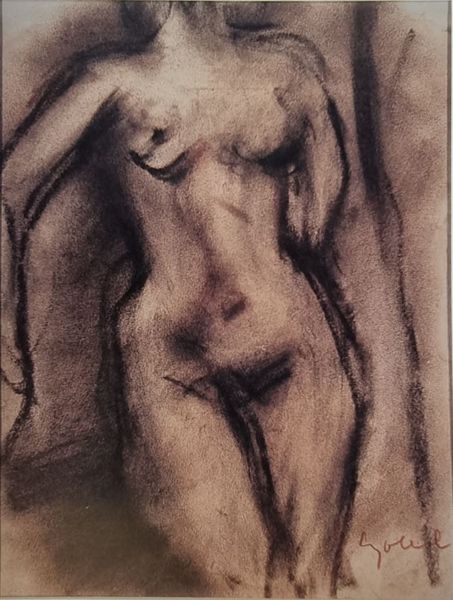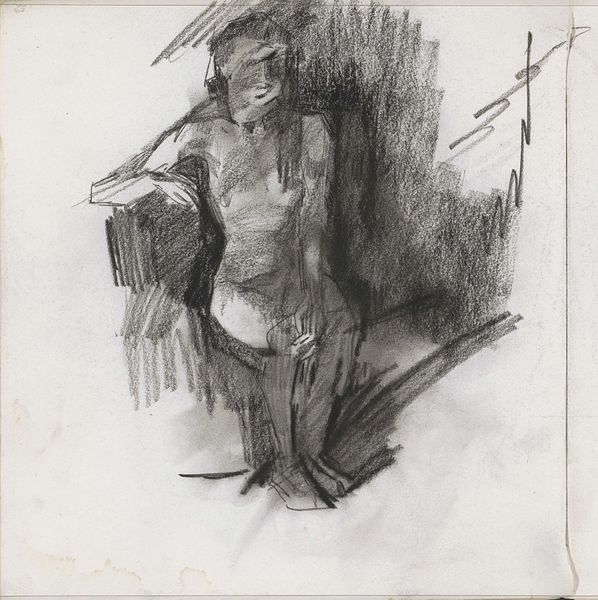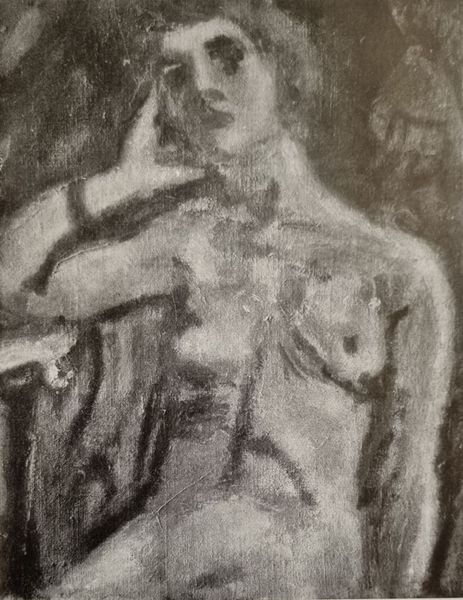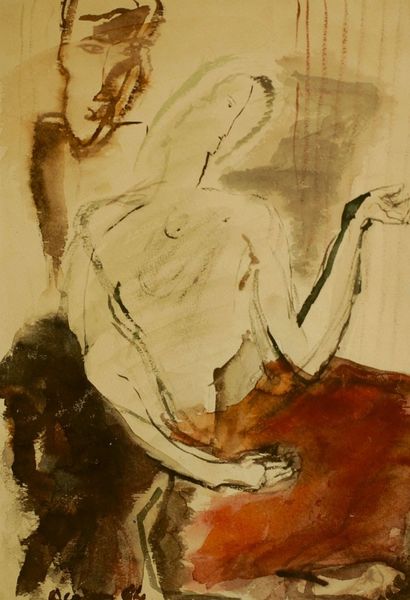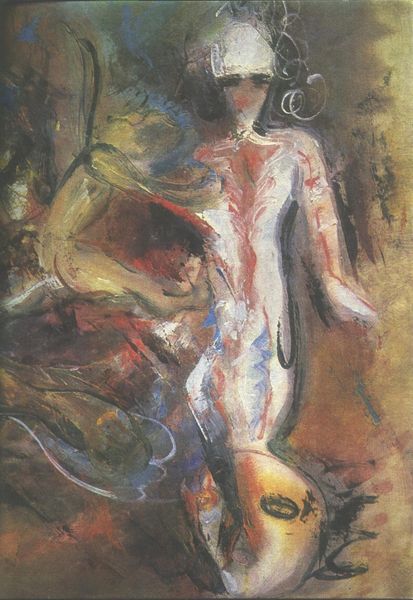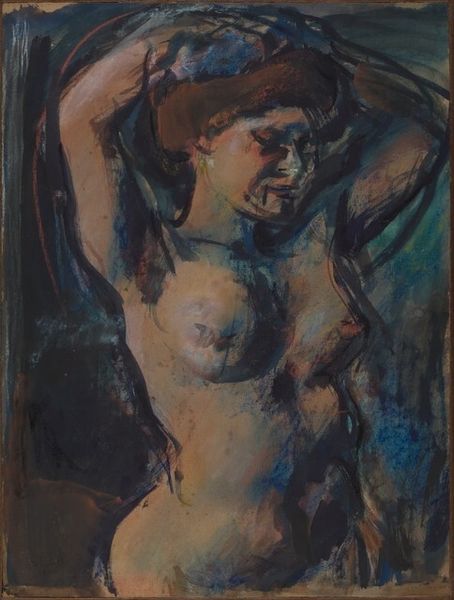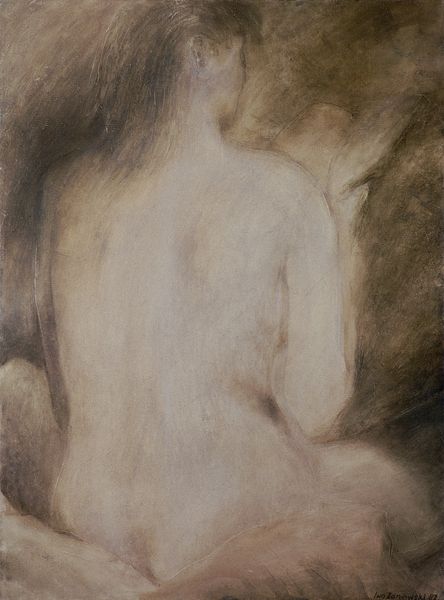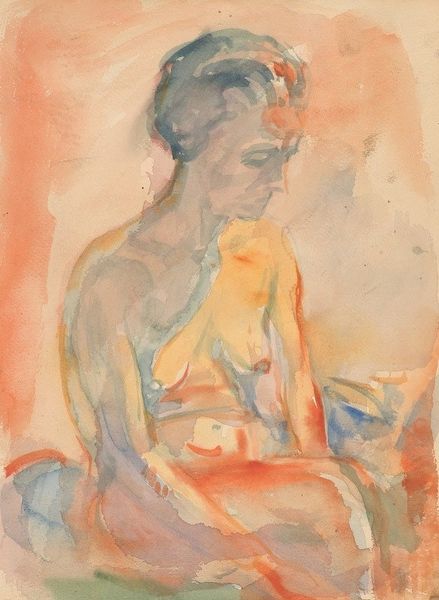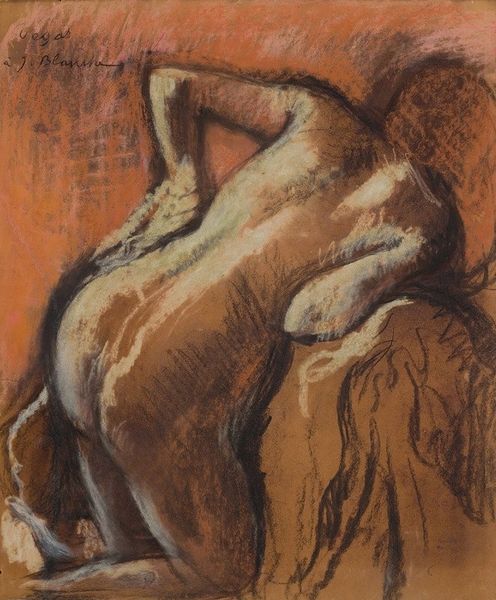
drawing, charcoal
#
portrait
#
drawing
#
charcoal drawing
#
figuration
#
charcoal art
#
expressionism
#
charcoal
#
nude
Copyright: Bela Czobel,Fair Use
Curator: Up next we have a somewhat brooding nude figure executed in charcoal, titled "Nude Sitting, 1935" by Bela Czobel. What are your initial thoughts? Editor: I find the figure’s obscured face intriguing. It evokes a feeling of anonymity, as if the sitter’s individual identity is less important than the universal experience of the human form. The warm earth tones also create a sense of intimacy despite the absence of distinct facial features. Curator: That anonymity might reflect broader anxieties within interwar art. Czobel and his contemporaries, many impacted by the upheaval of WWI, used figuration not necessarily to portray individuals but to reflect collective experiences of displacement and the changing perception of the body in the face of social distress. Editor: Interesting point. Formally, I notice how the strong diagonals of the figure’s arms and legs create dynamism within a very confined space. The artist seems to be using the boundaries of the paper almost as a theatrical proscenium for the display of the seated body. Curator: Indeed. Moreover, Expressionism like this, born from anxieties related to the early twentieth century industrialization and alienation, challenged the prevailing aesthetic norms of the time, and in the interwar years gained renewed momentum through being viewed by critics, politicians, and subsequently collectors as representative of modern spirit and vitality. Editor: The deliberate rawness of the charcoal lines enhances this emotionality, contributing to the Expressionistic quality you mentioned. There’s no attempt to idealize the figure, embracing the human body in its most unfiltered state. Curator: A crucial move within interwar Expressionism: to strip away artifice and explore emotional truth even in its most raw, confrontational forms. It was the age of rapidly democratizing ideas regarding class, social role and standing. Editor: That's an interesting observation, and helps contextualize Czobel's work as something not simply born of technical skill, but cultural significance. It is, if you like, an "honist" portrayal of how many humans feel internally as we grapple with daily modern concerns. Curator: Indeed, art becomes more than mere representation; it is an active participant in, and commentator on, societal discourse. I'll have to remember this one as well.
Comments
No comments
Be the first to comment and join the conversation on the ultimate creative platform.
